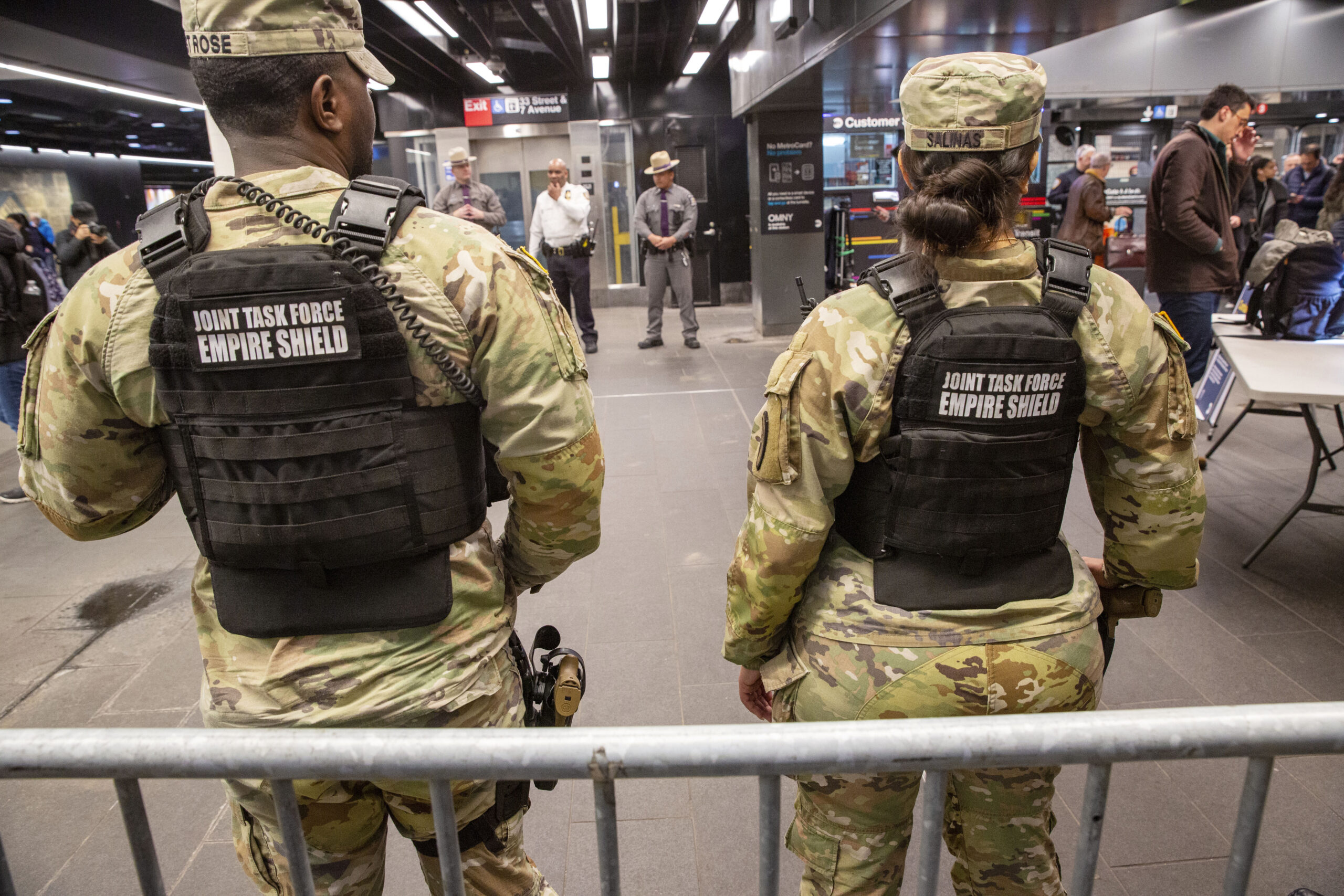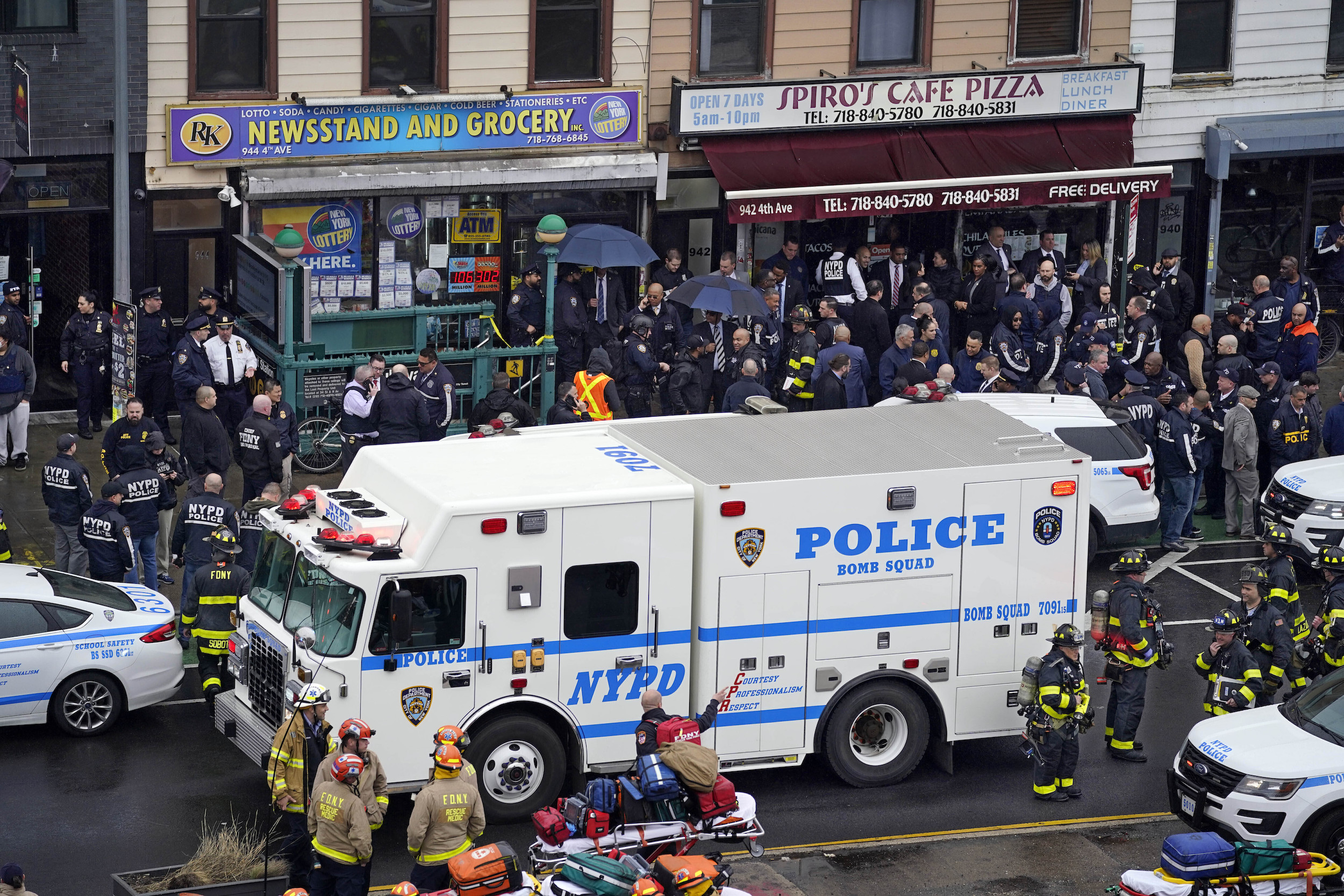Over the past few weeks, New Yorkers have seen jarring glimpses of violence in the subway system.
First, Governor Kathy Hochul brought long-gun-packing National Guard soldiers into stations across the city in response to rising subway crime and MTA-worker protests about on-the-job safety.
Riders of the A train in Brooklyn then hid frantically under seats during a daytime shootout following a confrontation between two men.
Right now we might be viewing the future of the subway system, as it is remade by the U.S. Supreme Court’s Bruen decision.
The case, brought by the National Rifle Association’s New York affiliate on behalf of two men who lived in sparsely populated parts of upstate New York, sought to eliminate laws, on the books since 1913. The laws allowed city and state officials to regulate who could carry loaded guns into the subway during rush hour, crowded bars or restaurants, Central Park on Sunday afternoons, Times Square on New Year’s Eve, or any number of other iconic and everyday venues.
In a new book about American gun crime and its discontents, I show how real and imagined subway violence is the exact scenario pro-gun Supreme Court justices invoked in their ruling to expand U.S. gun rights, and severely curtail the ability of diverse blue cities like New York to do much about it.
The story I tell ends in the SCOTUS courtroom during the November 2021 hearing for the case, New York Rifle & Pistol Association Inc. v. Bruen.
Arguing for the city, New York Solicitor General Barbara Underwood referenced the vast public health and criminology literature showing that allowing more guns in dense public spaces is a terrible idea. Our city is complex enough, thank you, without a bunch of armed tourists, criminals, and vigilantes riding around, Underwood effectively argued.
Investigating America’s gun violence crisis
Reader donations help power our non-profit reporting.
Associate Supreme Court Justice Samuel A. Alito Jr.’s questioning presaged the eventual majority decision — basically, laws should not limit Americans from carrying guns — by imagining sketchy “muggers” lurking in or near subway stations and bus stops, or criminals who brought guns “into the subways late at night.”
Alito’s formulation included racial stereotypes, distortions of actual crime data, and a seeming obliviousness to ways that many “illegal” guns start out as “legal” ones in red states before coming to cities like New York via a so-called iron pipeline.
In my research, I spent five years interviewing Southern gun owners, and like Alito, they often invoked subway crime to justify unfettered gun rights.
“If I ever go to New York I’m bringing my guns with me, and no one’s gonna take them away if I ride the subway” a conservative gun owner from Kentucky told me. Like just about every one of the many gun owners I interviewed who described their fear of being disarmed in the subway, he had never actually visited New York.
I also tracked how real-world instances of subway violence blasted across conservative media and social media reinforced the notion that commuting in diverse blue cities was straight out of John Carpenter’s 1981 B-movie classic “Escape from New York” (actually filmed in St. Louis), where danger lurks around every corner and people need to be armed to survive.
Following a rush hour subway shooting in Sunset Park in 2022, U.S. Representative Marjorie Taylor Greene took to Twitter to condemn New York’s gun laws and claim that she would have shot the attacker herself. She wrote: “As a woman & mother, I will unload my clip on a killer attacking me, my family, or others. Then I will reload.”
Events in New York over the past few weeks are tragic and terrifying. Yet pretty much any New Yorker will tell you that these anxieties are overblown. Indeed, it’s exponentially safer to ride the NYC subway than it is to own a gun.
New Yorkers should realize, however, that invocations like Alito’s come with material consequences that, paradoxically or by design, make it harder to maintain safety in the city and in the subway.
For instance, Bruen dramatically kneecapped the ability of states to limit the flow of guns into public places including buses and trains, airports, crisis shelters, and even summer camps, and put existing gun safety laws at serious risk.
Pro-gun judges now use the cover of Bruen to overturn laws put in place by blue-state voters across the U.S. It’s even worse in red states like in Missouri, where the legislature forbids Kansas City from regulating guns in public even after shootouts like the one at the recent Super Bowl parade.
Such developments are largely catastrophic from the perspective of public safety — we’ve long known that permissive gun laws correlate with crime.
As the Gothamist recently reported, the number of New Yorkers petitioning to own guns more than doubled in 2023. One of the oldest truisms in gun research is that more guns invariably lead to more shootings.
Blue state mayors and governors are forced to advocate for public safety without the ability to meaningfully regulate firearms. And to be fair, that task is made all the more difficult because a number of arguably misguided economic and policy decisions have also contributed to unsafe cities; less money in the coffers to address root causes of gun violence results.
I’ve come to believe that addressing recent events in New York City needs to go beyond protesting Governor Hochul’s actions — which invite critique — or calling for subway gun bans that may or may not be ruled constitutional.
Cities like New York need to get serious about ensuring civic safety in material ways that people can see and feel, and that move beyond asking people to make abstract leaps between gun policy and security, or citing data that may or may not resonate.
Effectively addressing crime is an essential part of that equation: We now see a number of Democratic candidates, mayors, and governors leaning into equitable approaches to law enforcement.
But you’re not going to police your way out of this moment with enforcement alone. Subway crime is a symptom of larger structural issues that require creative approaches, what I call “gun safety entrepreneurialism,” that build civic infrastructure. Fixing street lights, green space, jobs programs, accessible healthcare and housing, and other investments in “place” not only reduce gun crime, they build community resiliency and common cause.
Ultimately, we’re in this position because Donald Trump spent four years seeding courts across the nation with NRA-friendly judges — including appointing three pro-gun judges to the Supreme Court who helped swing the Bruen decision.
City dwellers concerned about recent developments can take various actions, but probably the most important one is to vote.


